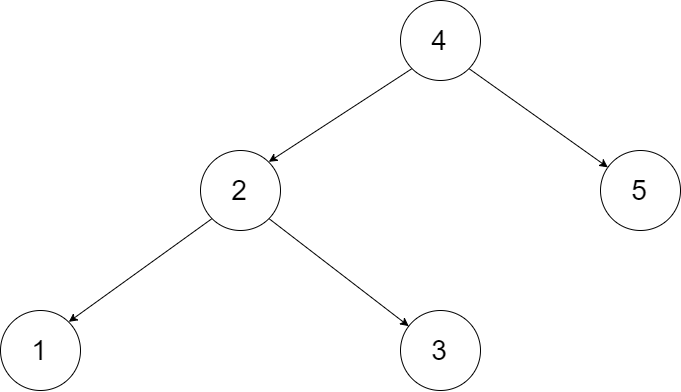[抄题]:
Convert a BST to a sorted circular doubly-linked list in-place. Think of the left and right pointers as synonymous to the previous and next pointers in a doubly-linked list.
Let's take the following BST as an example, it may help you understand the problem better:

We want to transform this BST into a circular doubly linked list. Each node in a doubly linked list has a predecessor and successor. For a circular doubly linked list, the predecessor of the first element is the last element, and the successor of the last element is the first element.
The figure below shows the circular doubly linked list for the BST above. The "head" symbol means the node it points to is the smallest element of the linked list.

Specifically, we want to do the transformation in place. After the transformation, the left pointer of the tree node should point to its predecessor, and the right pointer should point to its successor. We should return the pointer to the first element of the linked list.
The figure below shows the transformed BST. The solid line indicates the successor relationship, while the dashed line means the predecessor relationship.

[暴力解法]:
时间分析:
空间分析:
[优化后]:
时间分析:
空间分析:
[奇葩输出条件]:
[奇葩corner case]:
看一下node类的定义,有的不是val+next结构的,而是val+left+right结构的。
[思维问题]:
以为要用bst走一遍以后再翻,没想到bst里面可以直接在处理中间节点时翻(指定值迭代、指定指针)
[英文数据结构或算法,为什么不用别的数据结构或算法]:
dummy节点真的是完全不起作用的,我们返回的是dummy.next
[一句话思路]:
[输入量]:空: 正常情况:特大:特小:程序里处理到的特殊情况:异常情况(不合法不合理的输入):
[画图]:

[一刷]:
涉及到linkedlist遍历的题目都要用两个指针:cur和prev
[二刷]:
[三刷]:
[四刷]:
[五刷]:
[五分钟肉眼debug的结果]:
[总结]:
bst里面可以直接在处理中间节点时翻(指定值迭代、指定指针)
[复杂度]:Time complexity: O(n) Space complexity: O(n)
[算法思想:迭代/递归/分治/贪心]:
[关键模板化代码]:
[其他解法]:
[Follow Up]:
[LC给出的题目变变变]:
[代码风格] :
[是否头一次写此类driver funcion的代码] :
[潜台词] :


class TreeNode {
int val;
TreeNode left, right;
TreeNode(int item) {
val = item;
left = right = null;
}
}
class Solution {
Node prev = null;
public Node treeToDoublyList(Node root) {
//corner case
if (root == null) return null;
//initialization: dummy node
Node dummy = new Node(0, null, null);
dummy.right = prev;
prev = dummy;
//uitlize the function
inOrderTraversal(root);
//connect the first and last
prev.right = dummy.right;
dummy.right.left = prev;
//return
return dummy.right;
}
public void inOrderTraversal(Node cur) {
//exit case
if (cur == null) return ;
//traverse l, change cur & prev, r
inOrderTraversal(cur.left);
cur.left = prev;
prev.right = cur;
prev = cur;
inOrderTraversal(cur.right);
}
}
来源:oschina
链接:https://my.oschina.net/u/4417289/blog/3878412